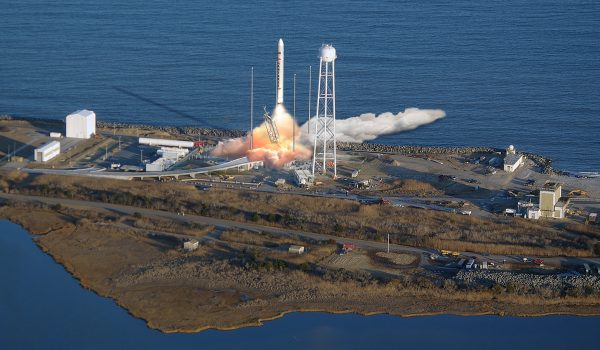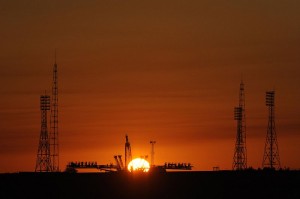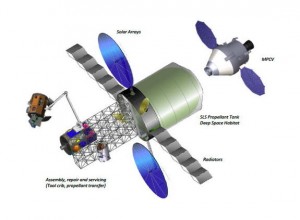

52 years after the legendary launch of Yuri Gagarin, Baikonour remains the most successful space port in the world (Credits: NASA).
Putin Pledges Support for Baikonour
Russian President Vladimir Putin visited the Baikonour Cosmodrome on 12th April, to commemorate the 52nd anniversary of Yuri Gagarin’s flight into space. During his trip, he issued a statement confirming Russia’s commitment in supporting the world’s oldest cosmodrome after the lease expires in 2020. It is hoped that this latest statement will ease tensions between Russia and Kazakhstan, who have recently been at odds over lease fees and launch agreements. Although the new contract hasn’t been officially signed yet, Putin has stated that 1.6 trillion rubles ($50 billion) will be invested in Baikonour until 2020 to make up for the years of under-investment. Additionally, Putin conversed with the crew of the ISS, to mark what Russians celebrate as their national Space Day, and offered reassurance that Baikonour would remain open for business for both European and US launches.
Antares Ready for Launch, Despite Glitch
The maiden flight of the Orbital Sciences Corp’s Antares rocket, carrying its Cygnus spacecraft mass simulator is on the launchpad at Wallops Launch Facility in Virginia, and is ready for its April 17th debut, after experiencing a glitch during a test firing on Saturday.
“”Late in the countdown, at about T-16 minutes, the test was halted because the launch team had detected a technical anomaly in the process,” said Orbital spokesperson Barron Berneski, commenting on the glitch. “A replacement unit will be installed within 24 hours with the goal of maintaining the April 17 launch date.”
Orbital is one of two companies contracted to resupply the ISS with cargo under the COTS program, the other being SpaceX. Wednesday’s launch will test the vehicle for the effects of the Cygnus craft on the rocket’s flight dynamics, and is hoped to reach an altitude of 250 and 300 kilometers.
NASA Considers Skylab 2 for L2
NASA’s Advanced Concepts Office is considering using the upper stage from the planned SLS launch vehicle as the hull for a space station at the Earth-Moon L2 Lagrangian point. The first Skylab, launched in the 1970s, was similarly constructed from the upper stage of a Saturn V.
Although still in the conceptual stage, engineer Brand Griffin recently presented the idea to the Future In Space Operations working group, pointing out the volumetric benefits of using the SLS upper stage. Having a diameter of 8.5 meters would equal a volume of 495 cubic meters of usable space, making it double the volume of the modules used on ISS. The SLS is due for its maiden flight in 2017.


















































































































![A trajectory analysis that used a computational fluid dynamics approach to determine the likely position and velocity histories of the foam (Credits: NASA Ref [1] p61).](https://www.spacesafetymagazine.com/wp-content/uploads/2014/05/fluid-dynamics-trajectory-analysis-50x50.jpg)



Leave a Reply